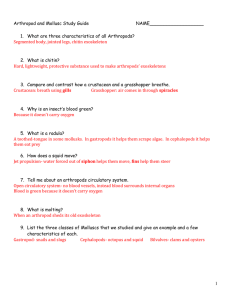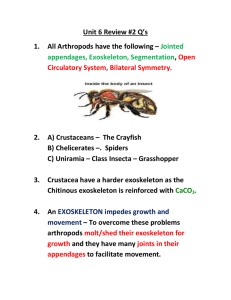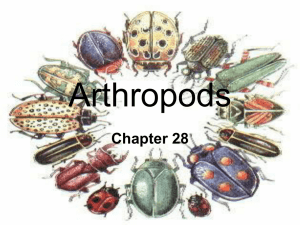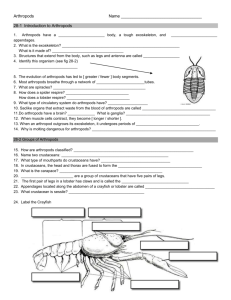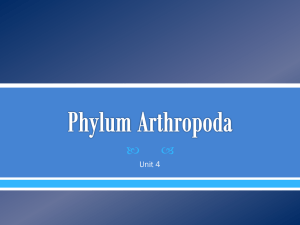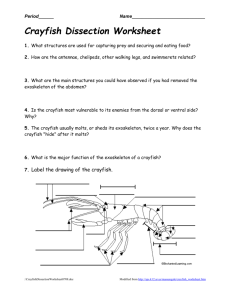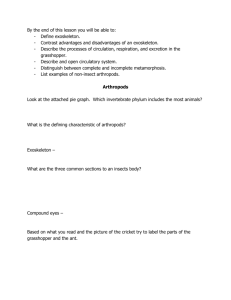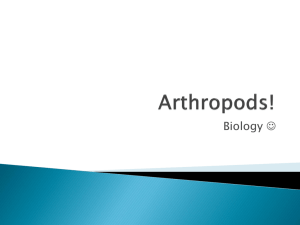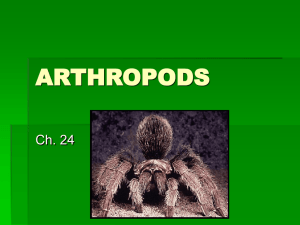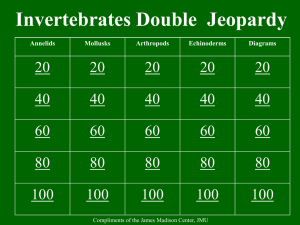Station 1: Compound Eye
advertisement
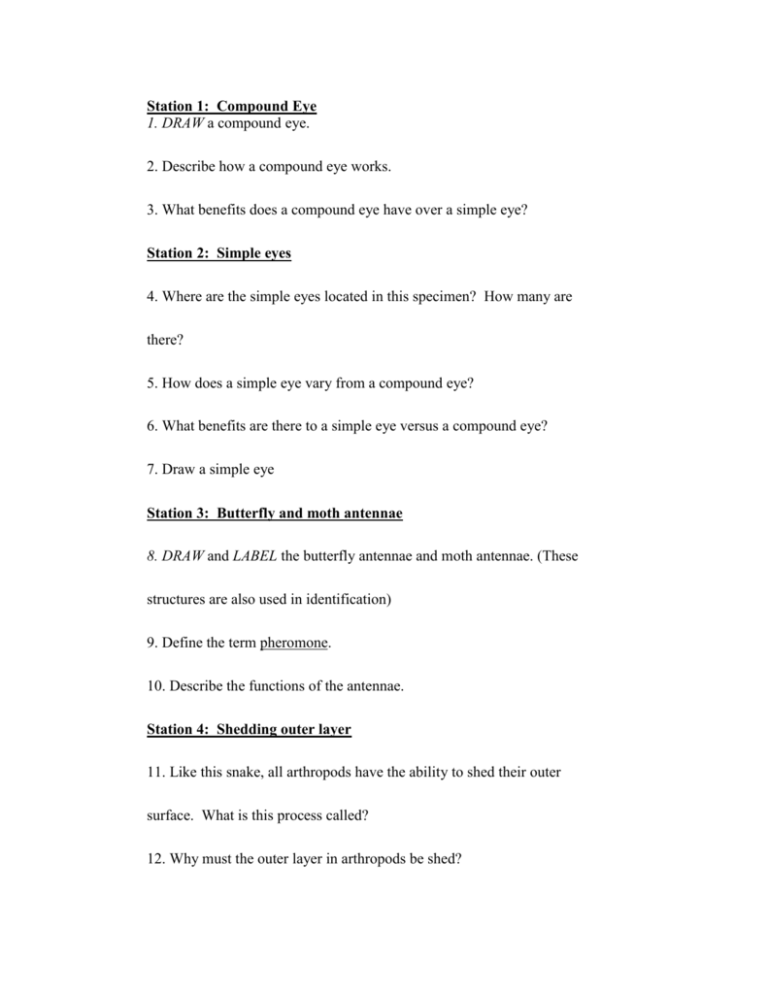
Station 1: Compound Eye 1. DRAW a compound eye. 2. Describe how a compound eye works. 3. What benefits does a compound eye have over a simple eye? Station 2: Simple eyes 4. Where are the simple eyes located in this specimen? How many are there? 5. How does a simple eye vary from a compound eye? 6. What benefits are there to a simple eye versus a compound eye? 7. Draw a simple eye Station 3: Butterfly and moth antennae 8. DRAW and LABEL the butterfly antennae and moth antennae. (These structures are also used in identification) 9. Define the term pheromone. 10. Describe the functions of the antennae. Station 4: Shedding outer layer 11. Like this snake, all arthropods have the ability to shed their outer surface. What is this process called? 12. Why must the outer layer in arthropods be shed? Station 5: Human body louse 13. DRAW this organism. 14. Why was this organism more common on humans in medieval days? Station 6: Spider Respiration in spiders takes place in book lungs. 15. Why does the respiration chamber have this name? 16. How are book lungs a useful adaptation for respiration on land (think of the increased surface area)? 17. Draw a picture of book lungs Station 7: Grasshopper 18. Name the segments in the grasshopper and where they are found. 19. Locate the spiracles in the grasshopper. Where are they found? 20. What is a spiracle? 21. The spiracles are connected to tracheal tubes. Describe what these are, and how air is pumped through them. Station 8: Bees 22. Observe and DRAW the bee stinger and poison sac. 23. Why might insects such as bees have evolved this structure? (Why is it a helpful adaptation?) 24. Bees, along with wasps and ants, are able to reproduce by a special process called parthenogenesis. Explain what parthenogenesis is. Why is parthenogenesis a useful adaptation in these species? Station 9: Mosquito reproduction 25. DRAW each of the stages of the mosquito life cycle shown on the slide. 26. What type of metamorphosis does the mosquito show? How do you know? 27. LABEL the stages that are present in your drawing. Station 10: Dragonfly Reproduction 28. What type of metamorphosis is shown by these dragonfly specimens? 29. DRAW and LABEL the stages in the dragonfly reproduction. 30. Which stages are shown by the specimens here? Station 11: Crayfish 31. Name and describe the segments in the crayfish. 32. How does the crayfish respirate? 33. Where are these structures found? 34. The crayfish has several mouthparts it has evolved over time as an adaptation to capturing prey. The primary mouthparts are called mandibles. Where are they found on the creayfish? How does that location help the crayfish in capturing prey? Station 12: Horseshoe crab 35. This organism is a rather unique Arthropod. Why are these called the ‘oldest living fossils’? 36. What fossil organism do these look very similar to? Station 13: Centipede and Millipede 37. DRAW and LABEL a centipede and a millipede. 38. What are the 3 main differences between these two groups? 39. These organisms, like most Arthropods, have structures called malphigian tubes to remove waste. Describe where these are found, and how they remove waste. Station 14: Various Arthropods 40. All of these Arthropods are well adapted to their environment. One primary reason for this is that they have evolved jointed structures called appendages. Define what an appendage is, and why that is a useful adaptation. 41. Arthropods have also evolved an exoskeleton. What are 3 benefits to having an exoskeleton? 42. What are 2 drawbacks to an exoskeleton? Station 15: Ticks 43. Which tick could be a possible carrier of Lyme disease? 44. Where was Lyme disease first diagnosed, and where is it most commonly found now? 45. What causes Lyme disease (describe exactly how it is transmitted to humans)? 46. How is Lyme disease treated or cured?
